Key Takeaways
-
Hōjicha is a roasted Japanese green tea with a nutty, caramelized flavor and warm reddish-brown color, offering a mellow alternative to matcha and sencha.
-
Extremely low in caffeine (~7–8 mg per cup), hōjicha is suitable for all ages and can be enjoyed any time of day, unlike stronger green teas or coffee.
-
Unique roasting process not only defines its cozy flavor but also reduces bitterness and makes it a soothing, comforting choice for both hot and cold brews.
Why Hōjicha May Be Your New Favorite Green Tea
If you’re looking to broaden your Japanese tea horizons this fall, hōjicha may be just the tea for you. Also commonly spelled as houjicha or hojicha, Hōjicha has a nutty, slightly sweet flavor, a toasty aroma, and a warm, reddish-gold colored liquor (or a deep, mahogany brown in its powdered form). Hojicha is a smooth, mellow alternative to Matcha and other strong teas, with an array of appealing health benefits. Enjoyed throughout the seasons, Hōjicha is the perfect tea for a crisp fall day and also makes for *excellent* mizudashi (cold brew) for a hot summer. Mizuba Tea carries a large collection of organic hojicha teas, and we’re delighted to share them with you!
Does Hojicha have caffeine?
Compared to Matcha and the other green teas Mizuba sources, hōjicha has a low caffeine content and little to no bitterness. Here is a handy breakdown:
Matcha: ~60–70 mg per serving (2 g powder).
Sencha: ~30–40 mg per 8 oz cup.
Hōjicha: ~7–8 mg per 8 oz cup.
Due to its exceedingly low caffeine content, hojicha is considered “the tea of the people” in Japan. Essentially, this means everyone - from toddlers to the elderly - enjoys hojicha. It’s gentle caffeine makes it especially helpful during pregnancy. Readily available wherever you are in Japan, it’s perfect for sipping all day.
And while Matcha’s bolder flavor profile is part of its charm, hōjicha’s rounded, roasty sweetness is a pleasant change of pace. If you’d like to reduce your caffeine intake, or are just looking for a pleasant, comforting, and soothing tea to drink throughout the day or before bed, hōjicha is a perfect choice.
How does it compare to coffee?
You may wonder if hojicha’s flavor profile is comparable to coffee. While different experiences, most coffee drinkers do find they love hojicha, especially in the afternoons! Hojicha has a similar comforting, full-bodied roasty flavor. In fact, the way hojicha is roasted is often compared to how green coffee is roasted. You can find light, medium, and dark roasts of hojicha on the market and you will enjoy discovering which flavor profile is your favorite cup of tea.
At a glance, hojicha’s flavor profile is nutty, roasted, caramelized, and can often have notes of smokiness or chocolate. The tea is lighter on the palate with a clean finish.
Coffee can be much more robust and heavier. Of course, there is a massively wide range of flavor experiences in coffee, especially given the variety of origins, but generally, coffee is much stronger and more acidic.
If you love coffee in the morning, try a hojicha latte in the afternoon if you’re avoiding a caffeine crash!
How is hōjicha made?
How does hōjicha get its distinctive—let’s say cozy—flavor, aroma, and appearance? The leaves are roasted, not unlike chestnuts over an open fire or green coffee beans. All teas are exposed to some heat at some point to stop oxidation. However, after hojicha’s first steaming, the style is defined by its second application of heat, the roast. Hōjicha is finished by roasting bancha leaves over hot coals in porcelain pots or specialized ovens a second time, giving the leaves their reddish-gold color and toasted, caramel-y flavor. Roasting is also what reduces the caffeine content and astringency. Commercially, hōjicha is roasted in specialized roasting machines.
As mentioned above, there is nuance in how producers approach roasting, which gives each hojicha from different brands a unique flavor experience! Just like coffee, many producers will stylize their hojicha into light, medium, and dark roasts.
Where does hōjicha come from?
Compared to Matcha, which has been brewed for nearly a thousand years, hōjicha is a younger style of tea. Around 1920, a tea merchant in Kyoto accidentally discovered the process when he decided to roast a batch of unsaleable sencha leaves, creating a distinctly gentle tea. And thus, happily, hōjicha was born! Kyoto also enjoys a specialized form of hojicha found and drunk only in the region: Kyô-bancha (also known as iribancha).
Is Hojicha the same as Matcha?
With the rise of hojicha’s popularity, unfortunately, there has been some confusion about what hojicha actually is defined as. While hojicha and matcha are both Japanese green teas, Hojicha is a distinctly different style of tea from matcha in the way it is harvested, crafted, and enjoyed.
In the field:
Matcha is made from shade-grown tea leaves (tencha) that are steamed, dried, and stone-milled into a fine powder. You consume the whole leaf.
Hōjicha is made from 2nd or 3rd harvest bancha leaves (often bancha or sencha) that are roasted at high temperatures. It’s usually sold as loose leaf, though it can also be milled into powder. Elevated versions of hojicha are made from the stems of gyokuro or tencha, and can be referred to as karigane hojicha, bocha (ours is made from tencha stems!), or kuki (kukicha) hojicha.
What does hojicha look and taste like in comparison to matcha?
Matcha is vivid green, rich, creamy, umami, vegetal, slightly sweet, sometimes grassy or savory.
Hōjicha is warm brown, toasty, nutty, caramel-like, with roasted cocoa or smoky notes — much milder and less vegetal.
How much caffeine does hojicha have in comparison to matcha?
Matcha has a relatively high (about 60–70 mg per serving), since you’re drinking the whole powdered leaf. The tea provides a sustained, calm alertness due to L-theanine. Read all about matcha’s caffeine on our blog.
Hōjicha has a very low amount of caffeine (about 7–8 mg per cup). The roasting process lowers caffeine, making it great for evenings or for sipping all day.
What people enjoy about each tea:
- Matcha has an energizing yet focused effect, like a “calm alertness.”
- Hōjich has a comforting and relaxing effect, often called a “cozy” tea.
Again, the overall defining aspect of hojicha to remember is that it is a roasted green tea. Calling hojicha “roasted matcha” is a misnomer and doesn’t accurately represent the processes hojicha goes through to achieve its style.
What are the benefits of hōjicha?:
Hōjicha contains L-Theanine, an amino acid known to promote relaxation and calm. The tea also provides catechins, naturally occurring antioxidants found in green tea. Many people find hōjicha soothing for winding down in the evening — but beyond any benefits, it’s simply a delicious joy to drink.
What can you make with Hojicha? Here are some of our favorite recipes!
Does Mizuba source quality hōjicha?
Of course! Mizuba curates an entire collection of exquisite hojicha. There you’ll find variations of loose leaf hojicha, modern hojicha blends in sachets, and of course, our signature organic hojicha powder – the best out there for houjicha lattes.
If you wanted to compare matcha to hojicha and mix and match your daily latte routine, we highly recommend Mizuba’s Organic Latte and Baking Bundle.
As seasons change, our tastes often change with them. With fall just around the corner, it’s the perfect time to enjoy this special, soothing tea.
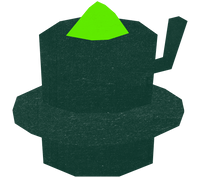

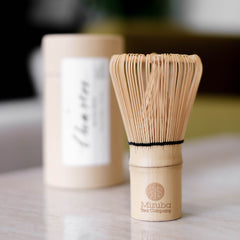
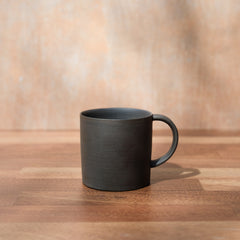
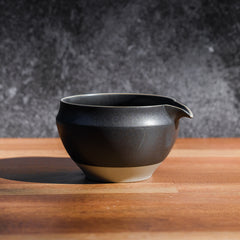
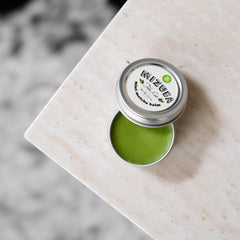
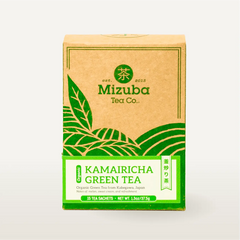
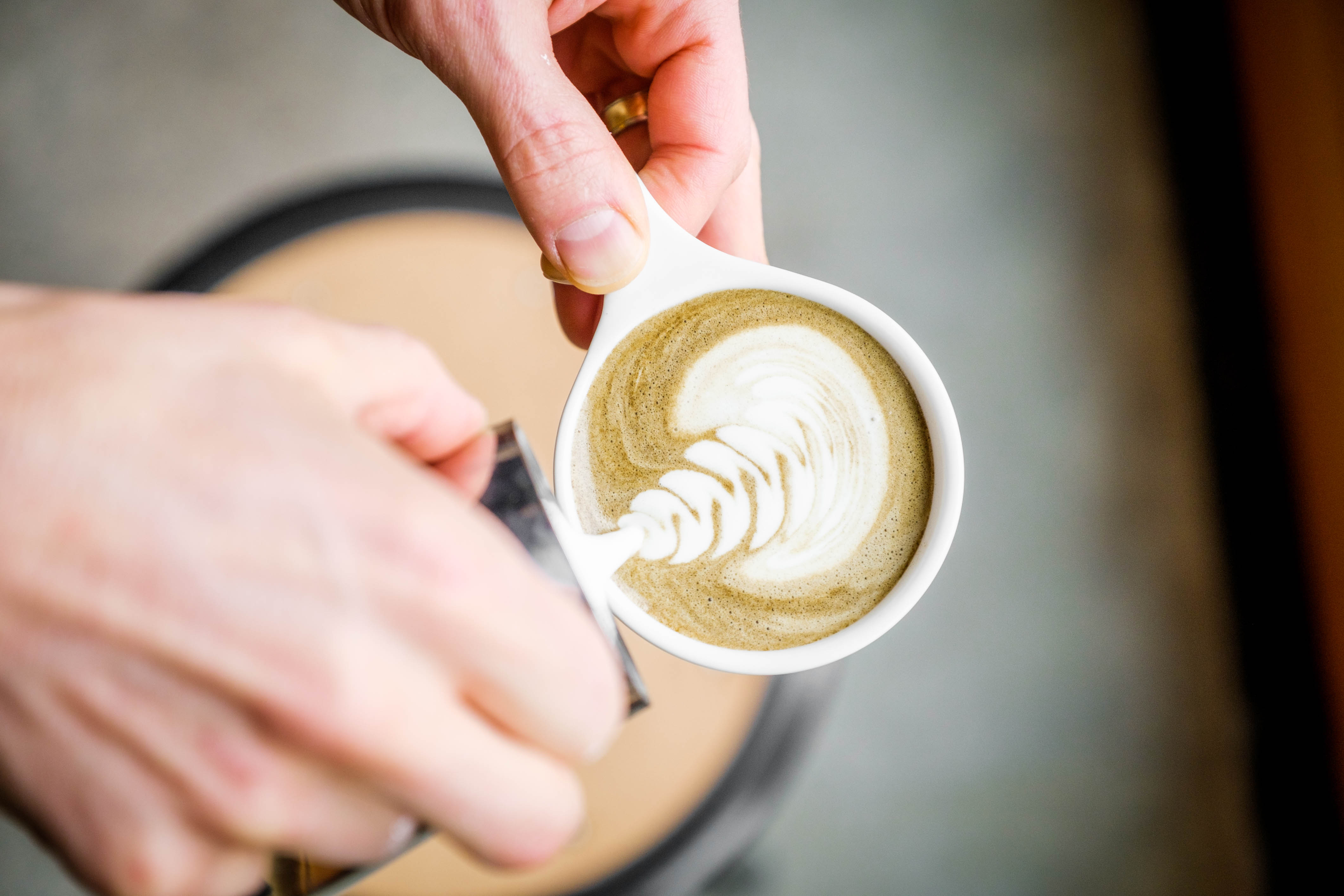

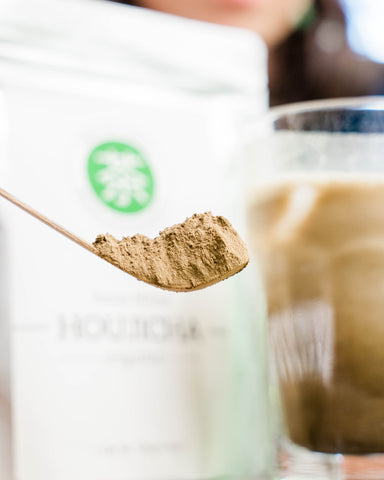
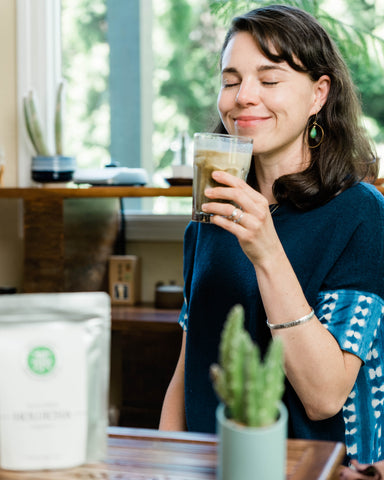
Leave a comment